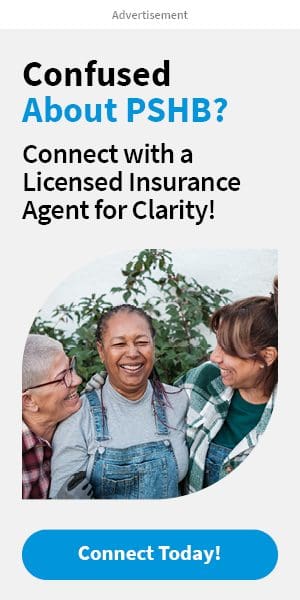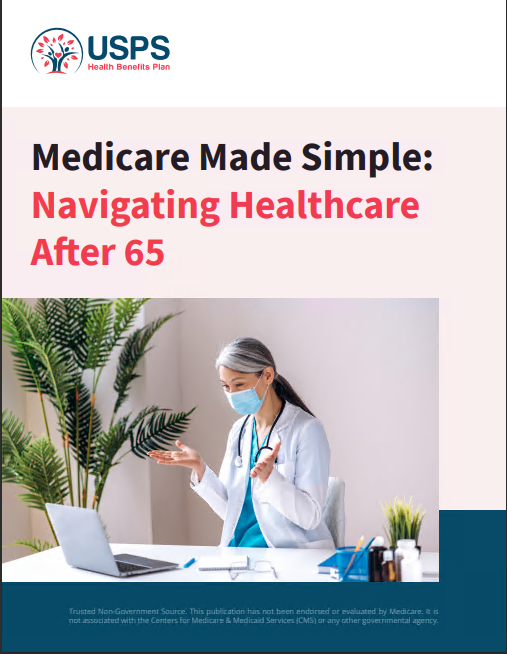Key Takeaways
-
The Postal Service Health Benefits (PSHB) program is crucial for USPS employees, with specific dates for open enrollment that should not be missed.
-
Understanding eligibility, enrollment periods, and deadlines ensures you don’t miss out on necessary health coverage under PSHB.
Everything You Need to Know About Enrolling in PSHB: USPS Employees, Don’t Miss These Dates
For United States Postal Service (USPS) employees, staying informed about the Postal Service Health Benefits (PSHB) program is essential. Whether you’re new to the USPS or nearing retirement, understanding the enrollment process and key deadlines can help you make informed decisions about your healthcare. This article covers everything you need to know about enrolling in PSHB, highlighting critical dates and steps to ensure you don’t miss out on necessary health benefits.
What is the Postal Service Health Benefits (PSHB) Program?
The Postal Service Health Benefits (PSHB) program is a newly established health insurance program designed specifically for USPS employees and retirees. Starting in 2025, this program will replace the Federal Employees Health Benefits (FEHB) program for USPS workers, marking a significant change in how postal employees access healthcare coverage. The PSHB program was created under the Postal Service Reform Act of 2022, and it aims to provide more tailored and efficient health benefits to USPS employees.
Who is Eligible for PSHB?
Eligibility for the PSHB program includes both current USPS employees and retirees. If you are currently employed by USPS or have retired from the service, you will be required to transition to PSHB during the designated enrollment period unless you qualify for an exemption.
Specifically, USPS employees who are currently enrolled in the FEHB program will automatically be transitioned to the PSHB program. However, retirees who are Medicare-eligible must enroll in Medicare Part B as a condition of receiving PSHB benefits. It’s important to note that spouses and dependents of USPS employees and retirees are also eligible for coverage under PSHB, provided they meet certain criteria.
Key Enrollment Dates You Must Know
Understanding the timeline for enrollment in PSHB is crucial for all USPS employees and retirees. Missing these dates could result in a gap in coverage or higher premiums in the future.
-
PSHB Enrollment Period: The initial open enrollment period for the PSHB program will begin in November 2024, aligning with the annual FEHB open season. This period is crucial for all eligible USPS employees and retirees to review their options and enroll in the new PSHB program.
-
Medicare Part B Enrollment for Retirees: For USPS retirees who are or will be 65 years or older by January 2025, it is mandatory to enroll in Medicare Part B. You should plan to enroll in Medicare Part B during your Initial Enrollment Period (IEP), which starts three months before you turn 65 and lasts for seven months. Failure to do so can result in penalties and may affect your PSHB coverage.
-
Special Enrollment Period (SEP): If you miss the open enrollment period, you may qualify for a Special Enrollment Period under certain circumstances, such as losing other health coverage. The SEP typically lasts 60 days from the date of the qualifying event.
-
Effective Date of Coverage: For those who enroll during the open enrollment period in November 2024, your PSHB coverage will become effective on January 1, 2025. It is critical to ensure that all enrollment actions are completed accurately and on time to avoid any delays in coverage.
How to Enroll in PSHB
The process for enrolling in the PSHB program is designed to be straightforward, but it’s essential to follow each step carefully to ensure you are fully covered.
-
Review Your Options: Before the enrollment period begins, take the time to review the different PSHB plans available. Consider factors such as coverage options, premiums, and out-of-pocket costs. Compare these with your current FEHB plan to determine the best option for your needs.
-
Access the Enrollment Portal: Enrollment will be conducted through an online portal, similar to the one used for FEHB. USPS employees and retirees will receive detailed instructions on how to access this portal and complete the enrollment process. Ensure you have your login credentials ready ahead of time.
-
Complete the Enrollment Form: During the enrollment period, log in to the portal and select the PSHB plan that best suits your needs. You will need to complete the enrollment form by entering your personal information, selecting your desired plan, and submitting the form before the deadline.
-
Confirmation of Enrollment: After submitting your enrollment form, you should receive a confirmation notice either through the portal or via email. Keep this confirmation for your records, as it will serve as proof of your enrollment.
What Happens If You Miss the Enrollment Deadline?
Missing the PSHB enrollment deadline can have serious consequences. If you do not enroll during the open enrollment period or a Special Enrollment Period, you may be left without health coverage. Additionally, retirees who fail to enroll in Medicare Part B by the required deadline will face late enrollment penalties, which can result in higher premiums.
In some cases, USPS employees and retirees who miss the enrollment deadline may have to wait until the next open season to enroll in the PSHB program. This could leave you without coverage for an extended period, so it’s crucial to mark your calendar and stay informed about all relevant dates.
Important Considerations for USPS Retirees
For USPS retirees, the transition to PSHB comes with specific considerations. As mentioned, enrollment in Medicare Part B is mandatory for those who are eligible. This requirement aims to coordinate benefits between Medicare and PSHB, ensuring that retirees receive comprehensive coverage without duplication of benefits.
Retirees should also be aware that if they are currently enrolled in a FEHB plan, their coverage will automatically transition to the PSHB program, provided they meet all eligibility requirements. However, it’s still recommended to review your options during the open enrollment period to ensure you are selecting the best plan for your needs.
How PSHB Differs from FEHB
While PSHB is designed to replace the FEHB program for USPS employees, there are several key differences between the two. The PSHB program is tailored specifically to the needs of postal workers and aims to provide more focused coverage options.
-
Targeted Coverage: Unlike FEHB, which serves all federal employees, PSHB plans are designed specifically with USPS employees and retirees in mind. This means that the coverage options, premiums, and network of providers are more closely aligned with the unique needs of the postal workforce.
-
Medicare Integration: PSHB requires Medicare Part B enrollment for eligible retirees, which is not a requirement under the FEHB program. This integration is designed to optimize healthcare coverage and reduce out-of-pocket costs for retirees.
-
Plan Options: While FEHB offers a wide range of plans from various providers, PSHB will have a more focused selection of plans. This is intended to simplify the decision-making process for USPS employees and ensure that the available plans meet their specific needs.
Tips for a Smooth Enrollment Process
To ensure a smooth transition to the PSHB program, here are some tips for USPS employees and retirees:
-
Start Early: Don’t wait until the last minute to review your options and begin the enrollment process. Starting early will give you ample time to compare plans, gather necessary documents, and complete the enrollment form.
-
Stay Informed: Keep an eye on communications from USPS and other official sources regarding the PSHB program. Important updates, instructions, and reminders will be sent out as the enrollment period approaches.
-
Seek Help if Needed: If you have questions or need assistance with the enrollment process, don’t hesitate to seek help. Resources will be available through the USPS, including online tools, customer service hotlines, and information sessions.
-
Keep Documentation: Make sure to keep all enrollment-related documents, including your confirmation notice, in a safe place. This will be important in case of any discrepancies or issues with your coverage.
-
Understand the Deadlines: Be aware of all relevant deadlines, including the open enrollment period, Medicare Part B enrollment, and any Special Enrollment Periods you may qualify for. Missing these deadlines could result in a gap in coverage or additional costs.
Ensuring Your Health Coverage Under PSHB
Enrolling in the Postal Service Health Benefits program is a critical step for USPS employees and retirees to ensure continuous and comprehensive health coverage. By understanding the eligibility requirements, key enrollment dates, and the differences between PSHB and FEHB, you can make informed decisions that best suit your needs. Start early, stay informed, and be proactive in your enrollment process to avoid any potential issues.
Contact Information:
Email: [email protected]
Phone: 9845552345










